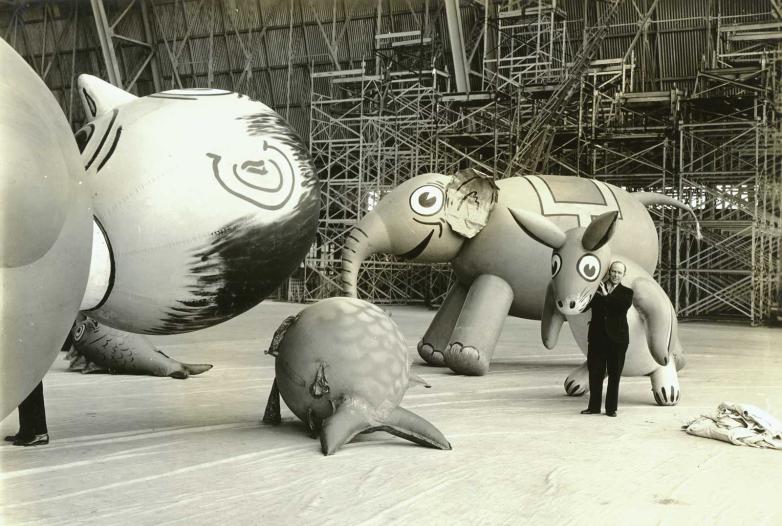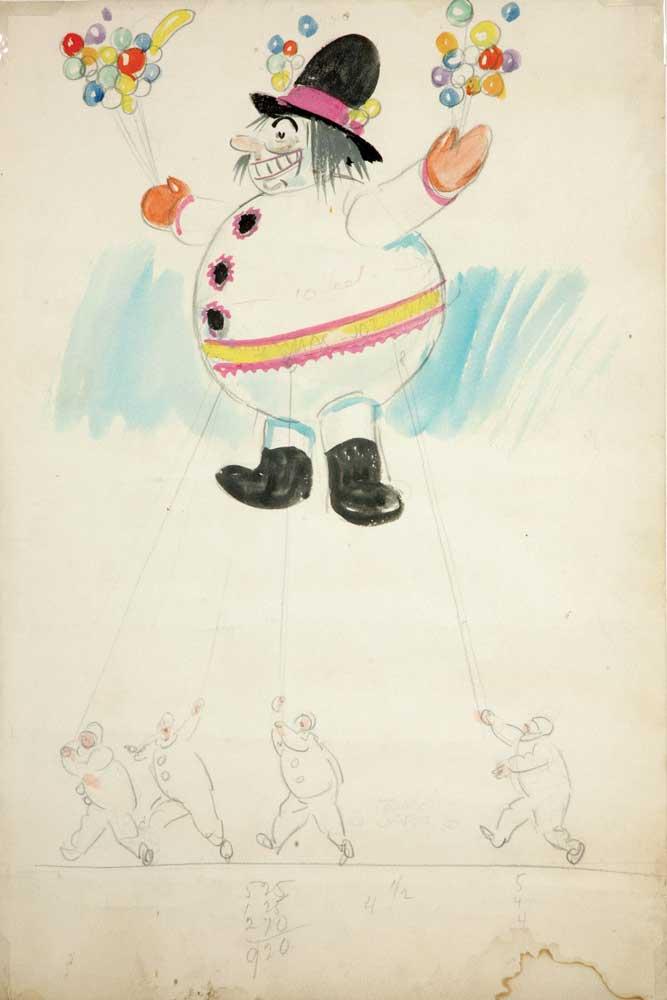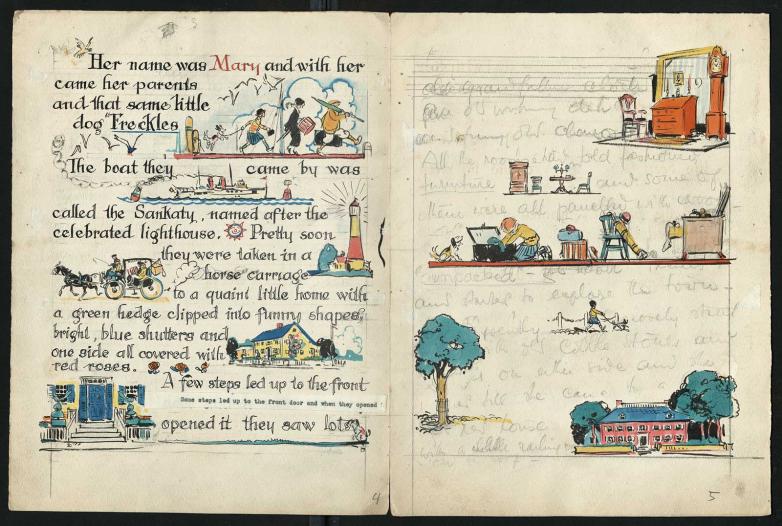Tony Sarg: Genius at Play, on view at the Norman Rockwell Museum in Stockbridge, Massachusetts, through November 5, is the first comprehensive exhibition devoted to the artist’s life and works. Stephanie Haboush Plunkett, chief curator at the Norman Rockwell Museum, and Lenore Miller, curator emerita of the George Washington University Museum, co-curated the exhibition and devoted an entire segment to Sarg’s books.
“His motto was to find the child within,” Miller said. “There’s a great quote in the exhibition about how work really has to be fun. Another catchphrase was to appeal to an audience aged six to sixty.”
Born in Guatemala in 1880, Sarg was raised in Germany. His artistic career began early, but was interrupted.
“Sarg was an illustrator as a very young man, but as a teenager, he was conscripted to the army. He was a lieutenant at seventeen,” Plunkett said.
Sarg later moved to London in 1905 and lived there for ten years, working for the London Sketch Club and advertising agencies. When he subsequently moved to New York, he continued illustrating, primarily for prestigious magazines such as The Saturday Evening Post and Cosmopolitan.
He illustrated books for prominent writers of the time, such as The Martial Adventures of Henry and Me, a World War I narrative by William Allen White, originally published in 1918. He also illustrated children’s books—many of which he authored—as well as adult humor books.
Along with Sarg’s marionettes, commercial products, stage sets, archival photographs, and ephemera, the exhibition showcases his original illustrations for these books.
“He was working in ink,” Plunkett said. “The children’s books were ink with watercolor. The books are very lively with a very fluid integration of images and words.”
Sarg additionally created jigsaw puzzles based on his book illustrations and was an early inventor of paper mechanisms popularized in pop-up books.
“In his books for children, he was very interested in movement and interactivity,” Plunkett said. “His books have moveable elements—dials that raise and lower somebody’s arm.”


















